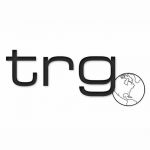Additional duties on imports from Canada have gone into effect as of March 2025 and it is important to know how they will impact the filing of your entry summary.
As of March 4, 2025, the Trump Administration has officially imposed a 24% additional tariff on goods imported into the United States from Canada. This is a topic we expect to have updates on throughout the year, but here is what we know at this time:
- An Additional 25% Tariff has gone into effect
- This is effective with respect to goods that are the product of Canada
- No tariffs on those goods from Canada that claim and qualify for USMCA preference
- Products entered for consumption, or withdrawn from warehouse for consumption, on or after 12:01 a.m. Eastern Standard Time on March 4, 2025
- These items/products are still eligible for the “de minimis” administrative exemption from duty and certain tax at 19 U.S.C. 1321(a)(2)(C)
All of the details for this announcement can be found in the CSMS # 64297449 – GUIDANCE: Additional Duties on Imports from Canada. This is the official publication from U.S. Customs and Border Protection as of March 4, 2025.
How Do You Declare These Additional Duties on Imports from Canada
U.S. Customs and Border Protection will be using the additional Chapter 99 HTSUS code to declare that your entry is subject to the additional duties on imports from Canada. This Chapter 99 code should be included on your entry summary when you make entry into the United States. You can see an example of how tariffs impact your entry summary in our blog post on the topic. There are also specific instructions for declaring the tariffs on imports from Canada toward the bottom of this article.
The additional tariffs listed below also apply to any products of Canada that is eligible for special tariff treatment under the United States-Mexico-Canada Agreement or that are eligible for temporary duty exemptions or reductions under subchapter II to chapter 99. “Products of Canada” include both goods of Canada under the rules of origin set forth in part 102, title 19 of the Code of Federal Regulations as well as goods for which Canada was the last country of substantial transformation prior to importation into the United States.
The following is the additional HTSUS classification and duty rate applies:
| Heading/ Subheading |
Article Description | Rate of Duty | Enforcement Date |
|---|---|---|---|
| 9903.01.10 | All imports of articles that are products of Canada, other than products classifiable under headings 9903.01.11, 9903.01.12, and 9903.01.13, and other than products for personal use included in accompanied baggage of persons arriving in the United States | An additional ad valorem rate of duty of 25% | 12:01 a.m. Eastern Standard Time |
| 9903.01.13 | Imports of energy or energy resources of Canada, as defined in section 8 of Executive Order 14156 of January 20, 2025 (Declaring a National Energy Emergency) as: crude oil, natural gas, lease condensates, natural gas liquids, refined petroleum products, uranium, coal, biofuels, geothermal heat, the kinetic movement of flowing water, and critical minerals, as defined by 30 U.S.C. 1606 (a)(3) | An additional ad valorem rate of duty of 10% | 12:01 a.m. Eastern Standard Time |
This information was pulled from the CSMS # 64297449 on 3/3/25
Again, the additional ad valorem duty applies IN ADDITION to all other applicable duties (including antidumping and countervailing duties), taxes, fees, exactions, and charges.
Exclusions for Additional Tariffs on U.S. Imports from Canada
Are there any exclusions to this additional duty on imports from Canada? While the answer is ‘yes’, they are very limited. The following are those exclusions:
| Heading/ Subheading |
Article Description |
|---|---|
| 9903.01.11 | Articles the product of Canada that are donations, by persons subject to the jurisdiction of the United States, of articles, such as food, clothing, and medicine, intended to be used to relieve human suffering. |
| 9903.01.12 | Articles the product of Canada that are informational materials, including but not limited to, publications, films, posters, phonograph records, photographs, microfilms, microfiche, tapes, compact disks, CD ROMs, artworks, and news wire feeds. |
This information was pulled from the CSMS # 64297449 on 3/3/25
The following are a few more topics addressed in the publication that may apply to your imported goods:
- CHAPTER 98
The additional duties imposed by headings 9903.01.10 and 9903.01.13 will not apply to goods for which entry is properly claimed under a provision of chapter 98 of the tariff schedule pursuant to applicable regulations of CBP, and whenever CBP agrees that entry under such a provision is appropriate, except for goods entered under heading 9802.00.80; and subheadings 9802.00.40, 9802.00.50, and 9802.00.60.For subheadings 9802.00.40, 9802.00.50, and 9802.00.60, the additional duties apply to the value of repairs, alterations, or processing performed (in Canada), as described in the applicable subheading.
For heading 9802.00.80, the additional duties apply to the value of the article assembled abroad (in Canada), less the cost or value of such products of the United States, as described
- FOREIGN TRADE ZONE
Articles that are products of Canada, excluding those encompassed by 50 U.S.C. 1702(b), except those that are eligible for admission to a foreign trade zone under “domestic status” as defined in 19 CFR 146.43, and are admitted into a United States foreign trade zone on or after 12:01 a.m. eastern standard time on March 4, 2025, must be admitted as “privileged foreign status” as defined in 19 CFR 146.41. Such articles will be subject, upon entry for consumption, to the duties imposed by this order and the rates of duty related to the classification under the applicable HTSUS subheading in effect at the time of admission into the United States foreign trade zone. - DRAWBACK
No drawback is available with respect to the additional duties - DE MINIMIS
As mentioned at the start of this blog post, these items/products are still eligible for the “de minimis” administrative exemption, including eligible articles sent to the United States through the international postal network.
How to Report Multiple HTS Codes for Your Imports from Canada
As of 12:01 a.m. Eastern Standard Time on March 4, 2025 CBP will reject entry summaries that are not in compliance with the requirements outlined in CSMS # 64297449. This includes, but is not limited to, entry summaries filed without the deposit of the required additional duties. If an entry summary is rejected, CBP will require a resubmission within two business days of the rejection and, if the rejected entry summary is not resubmitted in that time frame with payment, the importer of record may be subject to liquidated damages.
When submitting an entry summary in which a heading or subheading in Chapter 98 and/or 99 is claimed on imported merchandise, the following instructions will apply for the order of reporting the HTS on an entry summary line.
- Chapter 98 (if applicable)
- Chapter 99 number(s) for additional duties (if applicable)
- For trade remedies,
- first report the Chapter 99 HTS for Section 301,
- followed by the Chapter 99 HTS for IEEPA,
- followed by the Chapter 99 HTS for Section 232 or 201 duties (if applicable),
- followed by the Chapter 99 HTS for Section 201 or 232 quota (if applicable).
- Chapter 99 number(s) for REPLACEMENT duty or other use (i.e., MTB or other provisions)
- Chapter 99 number for other quota (not covered by #3) (if applicable)
- Chapter 1 to 97 Commodity Tariff
The entered value of the imported product reported on the entry summary line should be reported on the Chapter 1-97 HTS classification, unless Chapter 98 reporting provisions require the entered value to be reported differently.






![[Webinar] How Could Changes to De Minimis Impact Your Company?](https://traderiskguaranty.com/trgpeak/wp-content/uploads/2025/05/trg-how-de-minimis-impacts-customs-bond-webinar-400x250.png)
